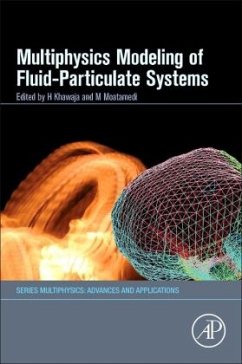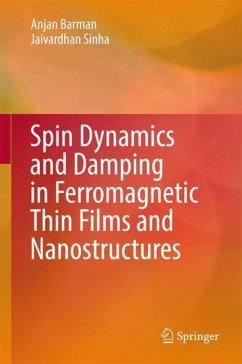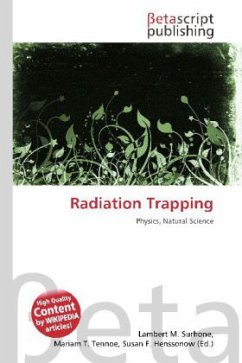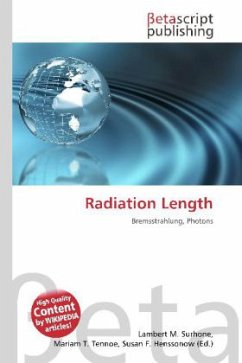
Radiation Damping
Versandkostenfrei!
Versandfertig in 6-10 Tagen
23,99 €
inkl. MwSt.

PAYBACK Punkte
12 °P sammeln!
Please note that the content of this book primarily consists of articles available from Wikipedia or other free sources online. Radiation damping in accelerator physics is a way of reducing the beam emittance of a high-velocity beam of charged particles. There are two main ways of using radiation damping to reduce the emittance of a particle beam damping rings and undulators and both rely on the same principle. They induce synchrotron radiation to reduce the particles'' momentum, then replace that with momentum in the desired direction of motion. As particles are steered around a closed loop (...
Please note that the content of this book primarily consists of articles available from Wikipedia or other free sources online. Radiation damping in accelerator physics is a way of reducing the beam emittance of a high-velocity beam of charged particles. There are two main ways of using radiation damping to reduce the emittance of a particle beam damping rings and undulators and both rely on the same principle. They induce synchrotron radiation to reduce the particles'' momentum, then replace that with momentum in the desired direction of motion. As particles are steered around a closed loop ( not necessarily circular), the lateral acceleration causes them to give off synchrotron radiation, thereby reducing the size of their momentum vectors without changing their orientation (ignoring quantum effects for the moment). Included around the ring are accelerating sections that replace the energy lost to the synchrotron radiation in such a way that the momentum vector of the particle will be restored to its original size, but will make a smaller angle with the desired trajectory.












